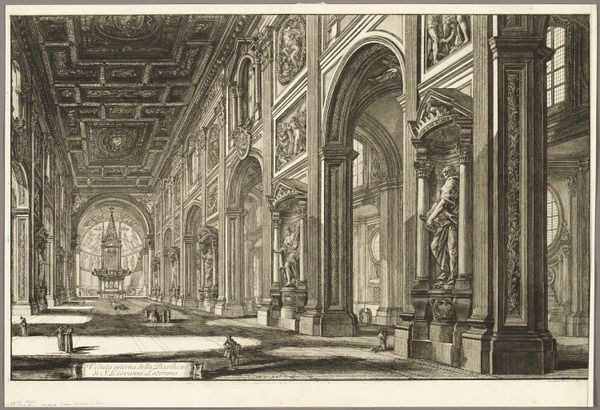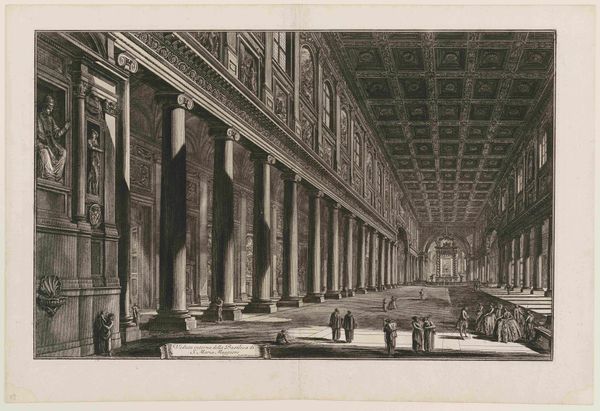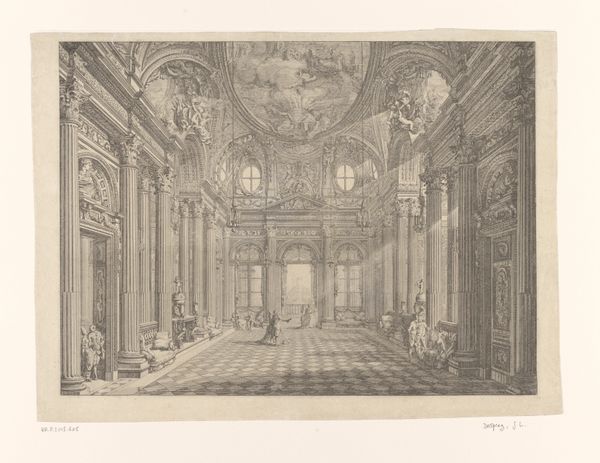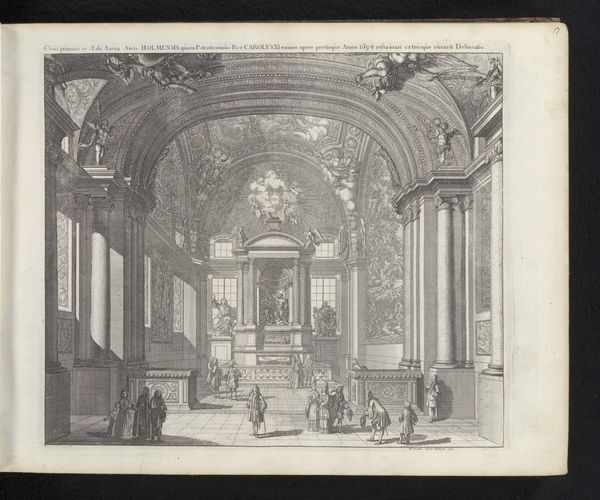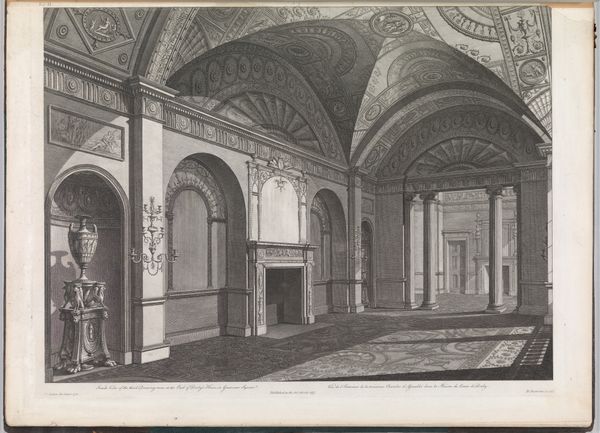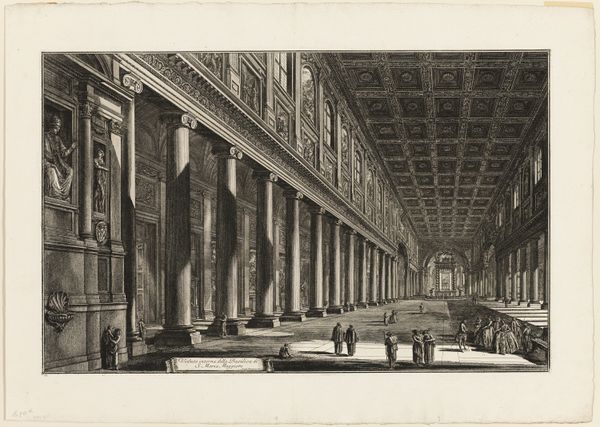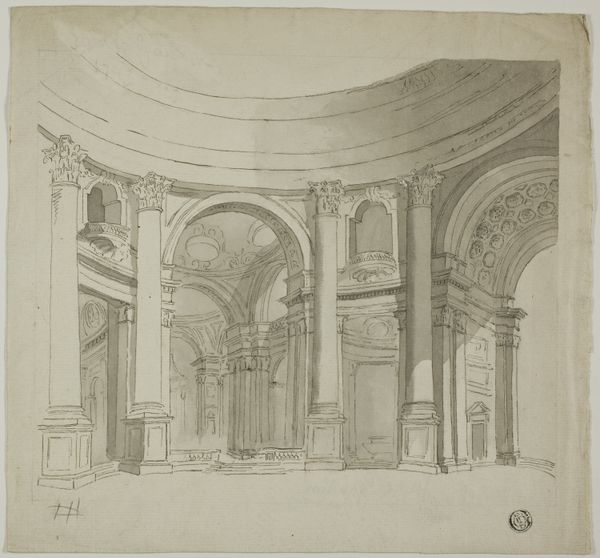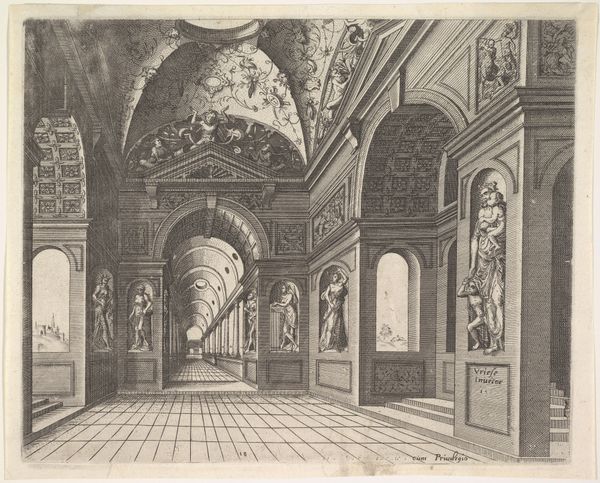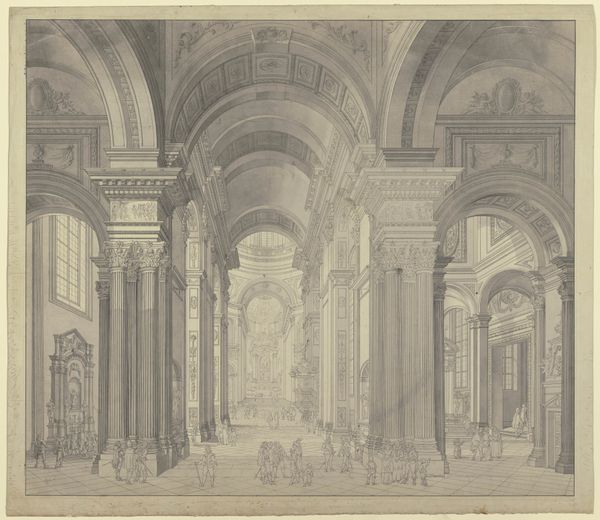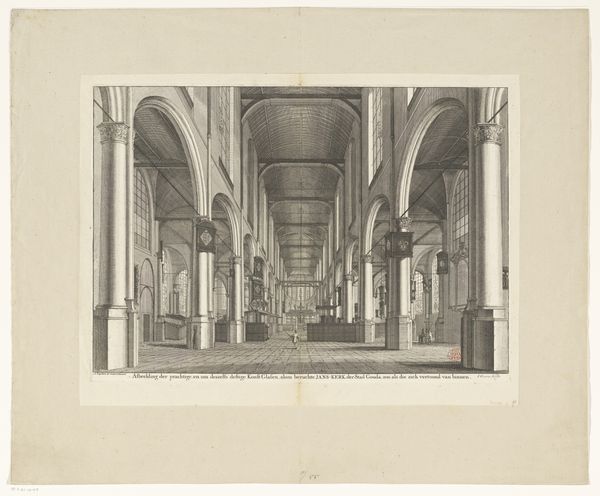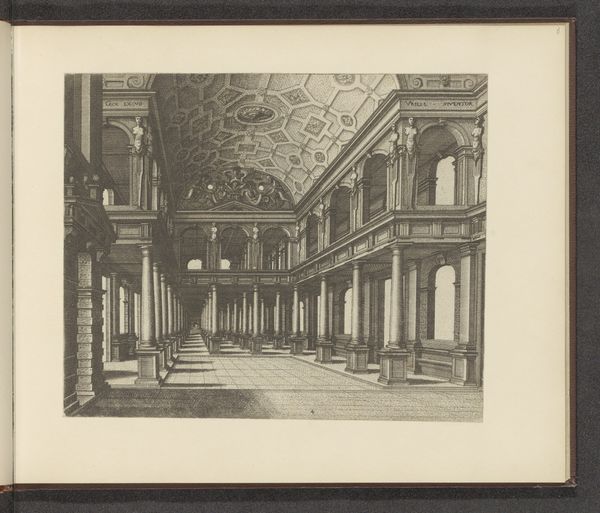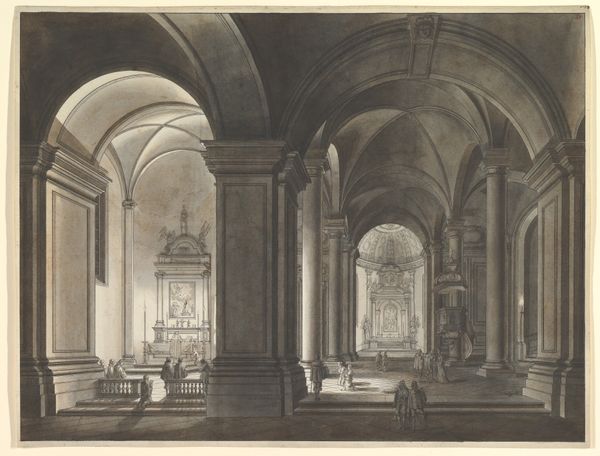
Dimensions: 17 x 27 3/4 in. (43.18 x 70.49 cm) (plate)20 3/4 x 30 in. (52.71 x 76.2 cm) (sheet)
Copyright: Public Domain
Editor: So, this is Giovanni Battista Piranesi's "S. Giovanni Laterno" from 1768, done in etching and engraving. It's a breathtaking view inside the Basilica. I'm immediately struck by the dizzying perspective. What’s your take on this, from a historical point of view? Curator: Well, it's fascinating to consider Piranesi's project within the context of 18th-century Rome. The city was being actively shaped and reshaped by the papacy, which viewed monumental architecture as a powerful tool for projecting authority, both spiritual and temporal. Does this etching celebrate this power or critique it? Editor: I suppose both. The scale makes the people tiny, almost insignificant. Is he glorifying the church, or commenting on how overwhelming religious power can be? Curator: Exactly! Piranesi's dramatic perspective choices aren't neutral. He isn't just documenting space. Consider who his audience might have been. Prints like these were bought by wealthy tourists as souvenirs. How do you think seeing prints like these shaped their perceptions of the Eternal City and its institutions? Editor: It feels like propaganda, but really sophisticated. It's selling Rome, its history, its power…through dramatic visual tricks. Curator: Precisely. It invites us to think critically about the public role of art. Are artists merely replicating dominant narratives, or are they subtly interrogating the structures around them? What message do you think Piranesi tries to convey? Editor: This really shifts my perception. It's not just a pretty picture, but part of a bigger conversation about power, religion, and representation. I’ll look differently from now on to architecture prints. Curator: And hopefully, you’ll also think critically about the spaces that we now inhabit!
Comments
No comments
Be the first to comment and join the conversation on the ultimate creative platform.
